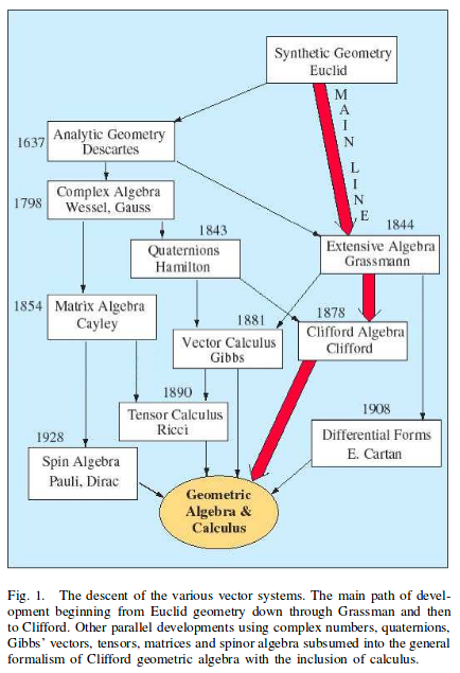The vector algebra war: a historical perspective by James M. Chappell, Azhar Iqbal, John G. Hartnett, Derek Abbott.
Abstract:
There are a wide variety of different vector formalisms currently utilized in engineering and physics. For example, Gibbs’ three-vectors, Minkowski four-vectors, complex spinors in quantum mechanics, quaternions used to describe rigid body rotations and vectors defined in Clifford geometric algebra. With such a range of vector formalisms in use, it thus appears that there is as yet no general agreement on a vector formalism suitable for science as a whole. This is surprising, in that, one of the primary goals of nineteenth century science was to suitably describe vectors in three-dimensional space. This situation has also had the unfortunate consequence of fragmenting knowledge across many disciplines, and requiring a significant amount of time and effort in learning the various formalisms. We thus historically review the development of our various vector systems and conclude that Clifford’s multivectors best fulfills the goal of describing vectorial quantities in three dimensions and providing a unified vector system for science.
An image from the paper captures the “descent of the various vector systems:”
The authors contend for use of Clifford’s multivectors over the other vector formalisms described.
Assuming Clifford’s multivectors displace all other systems in use, the authors fail to answer how readers will access the present and past legacy of materials in other formalisms?
If the goal is to eliminate “fragmenting knowledge across many disciplines, and requiring a significant amount of time and effort in learning the various formalisms,” that fails in the absence of a mechanism to access existing materials using the Clifford’s multivector formalism.
Topic maps anyone?
